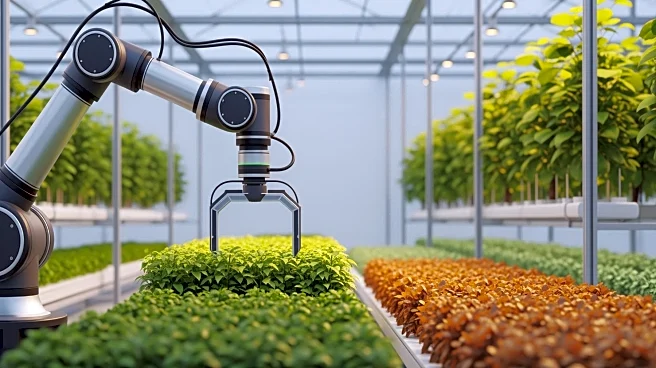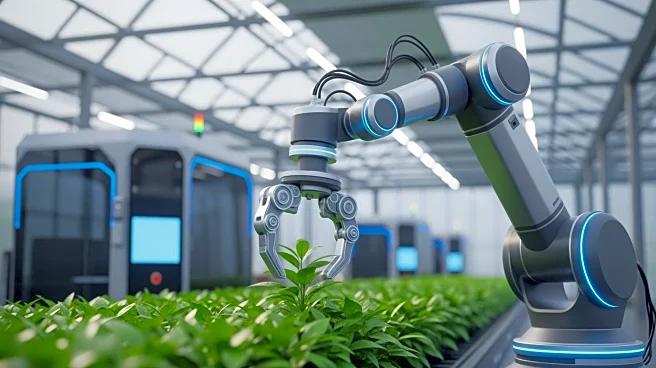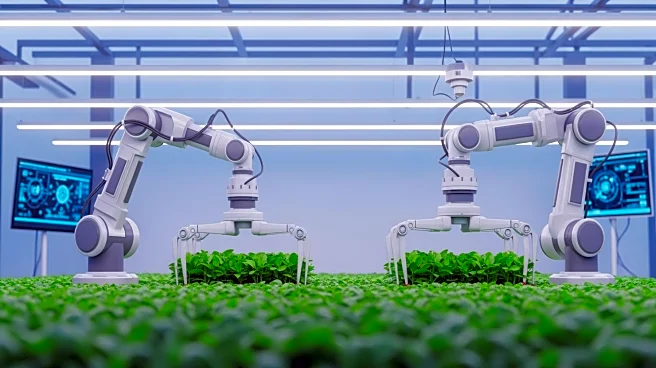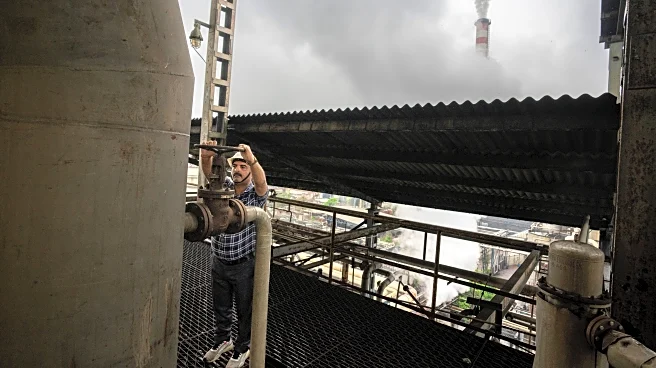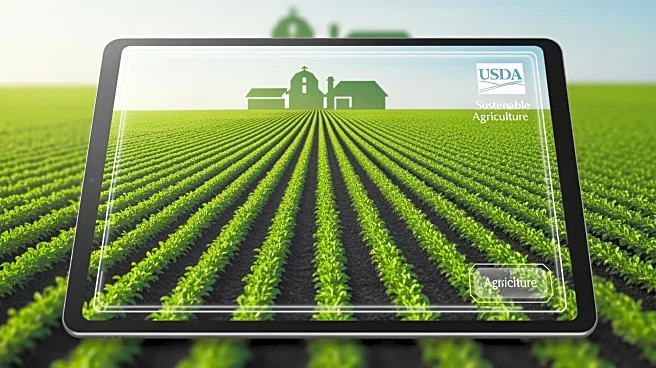What's Happening?
The World Economic Forum (WEF) has released a report emphasizing the transformative potential of emerging technologies such as AI, robotics, and nanotechnology in agriculture. The report, titled 'Shaping
the Deep-Tech Revolution in Agriculture,' highlights case studies from India and outlines how these technologies can enhance productivity, sustainability, and resilience in the agricultural sector. The WEF identifies seven key technologies, including generative AI and satellite-enabled remote sensing, that could fundamentally change how crops are grown and distributed, addressing challenges like climate change and resource depletion.
Why It's Important?
The integration of advanced technologies in agriculture is crucial for addressing global food security challenges. As the world population grows, the demand for food increases, necessitating innovative solutions to boost agricultural productivity. The adoption of AI and robotics can lead to more efficient farming practices, reduce environmental impact, and support rural livelihoods. This technological shift could also drive economic growth in the agricultural sector, benefiting farmers and related industries.
What's Next?
The WEF calls for increased efforts to scale deep-tech innovations in agriculture, urging governments to adopt agile policies and regulatory frameworks to support technological advancement. The report suggests that collaboration between industry, academia, and policymakers is essential to realize the full potential of these technologies. Future developments may include the implementation of precision agriculture techniques and the development of climate-resilient crop varieties.
Beyond the Headlines
The ethical and social implications of deploying advanced technologies in agriculture warrant consideration. Issues such as data privacy, technology access, and the potential displacement of traditional farming practices must be addressed to ensure equitable benefits. The long-term impact on rural communities and the environment will be critical factors in the successful integration of these technologies.
